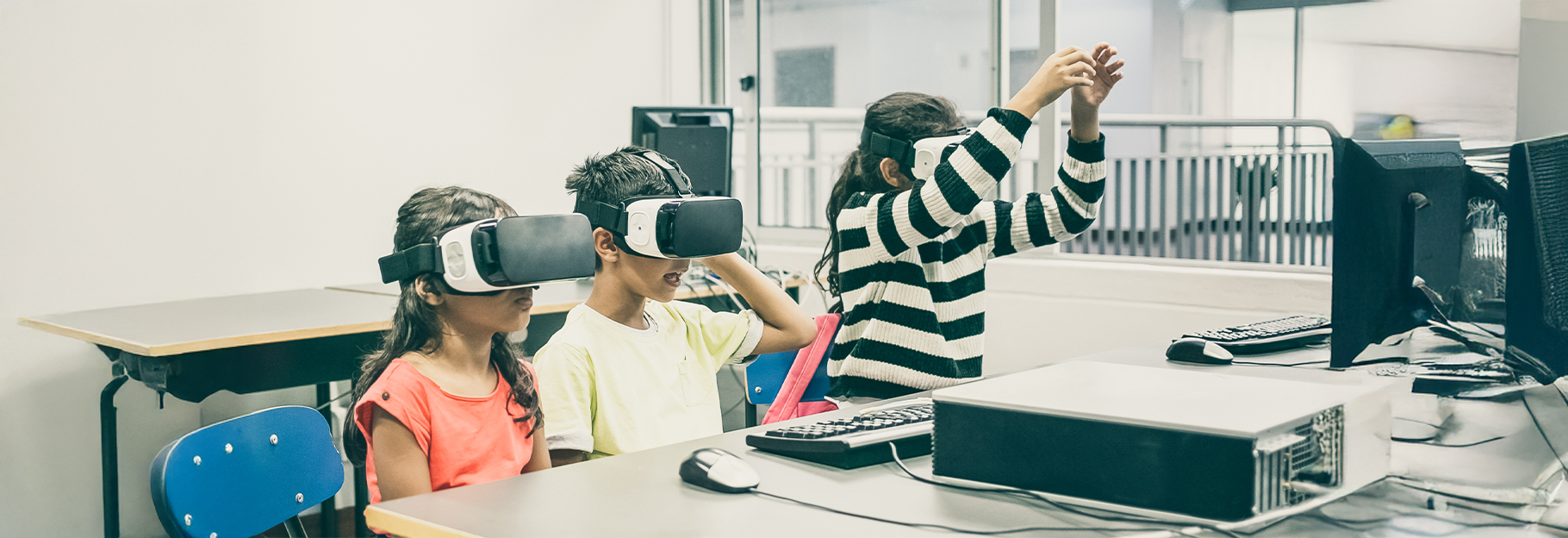Balancing Technology and Holistic Education in the Digital Age
When cutting-edge technology permeates every facet of life, the intersection of holistic education and digital advancements poses both opportunities and challenges. Technology integration in education is transforming classrooms, making modern learning more effective and interactive. However, achieving a balance between learning and technology and maintaining the principles of holistic learning is essential for nurturing well-rounded individuals.
The Rise of Technology in Education
The adoption of digital tools in education has been exponential. According to a 2020 report by the World Economic Forum, the global education technology market is expected to reach $404 billion by 2025, driven by innovations such as artificial intelligence, virtual reality, and online learning platforms. This technology integration in education is designed to make learning more accessible, personalised, and engaging.
The Core of Holistic Education
Holistic education is an approach that goes beyond academic excellence to include emotional, social, physical, and spiritual development. It emphasizes the importance of a holistic education and not just catering to the intellect. This approach encourages students to develop critical thinking, creativity, emotional intelligence, and interpersonal skills.
The Synergy of Learning and Technology
The challenge lies in merging holistic learning with the digital world. Modern learning environments can greatly benefit from technology, provided it is used thoughtfully. For instance, technology can offer diverse learning experiences through interactive simulations, virtual field trips, and multimedia content that cater to different learning styles. However, it is crucial to ensure that technology does not overshadow the human aspects of education.Benefits of Technology in Holistic Education
Personalised Learning: The use of technology facilitates personalised learning paths, allowing students to learn at their own pace. This aligns with the principles of holistic education, where individual needs and abilities are recognized.
Enhanced Engagement: Interactive tools and multimedia content can make lessons more engaging, helping students retain information better and fostering a love for learning.
Global Connectivity: The internet connects students with peers and educators worldwide, promoting cultural awareness and collaborative skills, which are essential components of holistic learning.
Real-World Applications: Digital tools can simulate real-world scenarios, providing students with practical skills and problem-solving abilities relevant to modern careers.
Challenges in Technology Integration
Despite the benefits, there are significant challenges in achieving a balanced approach to learning and technology.An absolute reliance on digital tools can lead to a reduction in face-to-face interactions, critical thinking, and physical activities, which are vital for holistic development.
Screen Time: Excessive screen time can impact students' physical health, leading to issues like eye strain, poor posture, and reduced physical activity. Balancing screen time with outdoor activities and physical education is crucial.
Digital Distractions: The internet offers a wealth of information but also countless distractions. Teaching students to manage digital distractions and use technology purposefully is essential.
Equity and Access: Not all students have equal access to technology. Ensuring equitable access to digital tools is vital for inclusive education.
Privacy and Security: The use of digital tools raises concerns about data privacy and cybersecurity. Schools must implement robust policies to protect students' information.
Strategies for Balancing Technology and Holistic Learning
Integrative Curriculum: Develop a curriculum that integrates technology with traditional teaching methods. Use digital tools to enhance rather than replace face-to-face interactions.
Mindful Use of Technology: Educate students about the mindful use of technology. Encourage them to balance screen time with physical activities, social interactions, and time in nature.
Professional Development for Educators: Provide ongoing training for educators to effectively integrate technology into their teaching while maintaining the principles of holistic education.
Parental Involvement: Involve parents in the educational process, providing them with resources and training to support their children's learning at home.
Student-Centered Learning: Focus on student-centered learning approaches that allow students to take ownership of their education, fostering intrinsic motivation and lifelong learning.
Future Trends in Holistic and Technological Education
Looking ahead, the integration of learning and technology is expected to evolve further. Innovations such as artificial intelligence and augmented reality hold the potential to create more immersive and personalised learning experiences. However, it is crucial to ensure that these advancements are aligned with the values of holistic education.
AI and Personalisation: Artificial intelligence can provide personalised learning experiences, adapting to each student's pace and learning style. However, it is essential to balance AI-driven learning with human interaction and emotional support.
Augmented Reality (AR): AR can bring abstract concepts to life, making learning more engaging and interactive. It can also provide hands-on experiences that are essential for holistic learning.
Mindfulness and Digital Well-being: As technology becomes more integrated into education, there will be a growing emphasis on digital well-being. Teaching students mindfulness and strategies to manage their digital lives will be crucial.
In Conclusion
Balancing technology integration in education with holistic learning is not only possible but essential in the digital age. By embracing the benefits of digital tools while staying true to the principles of holistic education, we can create learning environments that nurture well-rounded, emotionally intelligent, and resilient individuals. Parents, educators, and policymakers must work together to ensure that modern learning remains balanced, inclusive, and aligned with the holistic development of every child.

20 Comment
Mangesh Sawant
Lorem ipsum, dolor sit amet consectetur adipisicing elit. Sed, velit officiis. Dolorum, deleniti necessitatibus nostrum labore quo soluta sed tempora ea, nam eaque sint, nemo rerum molestias vitae ratione porro?